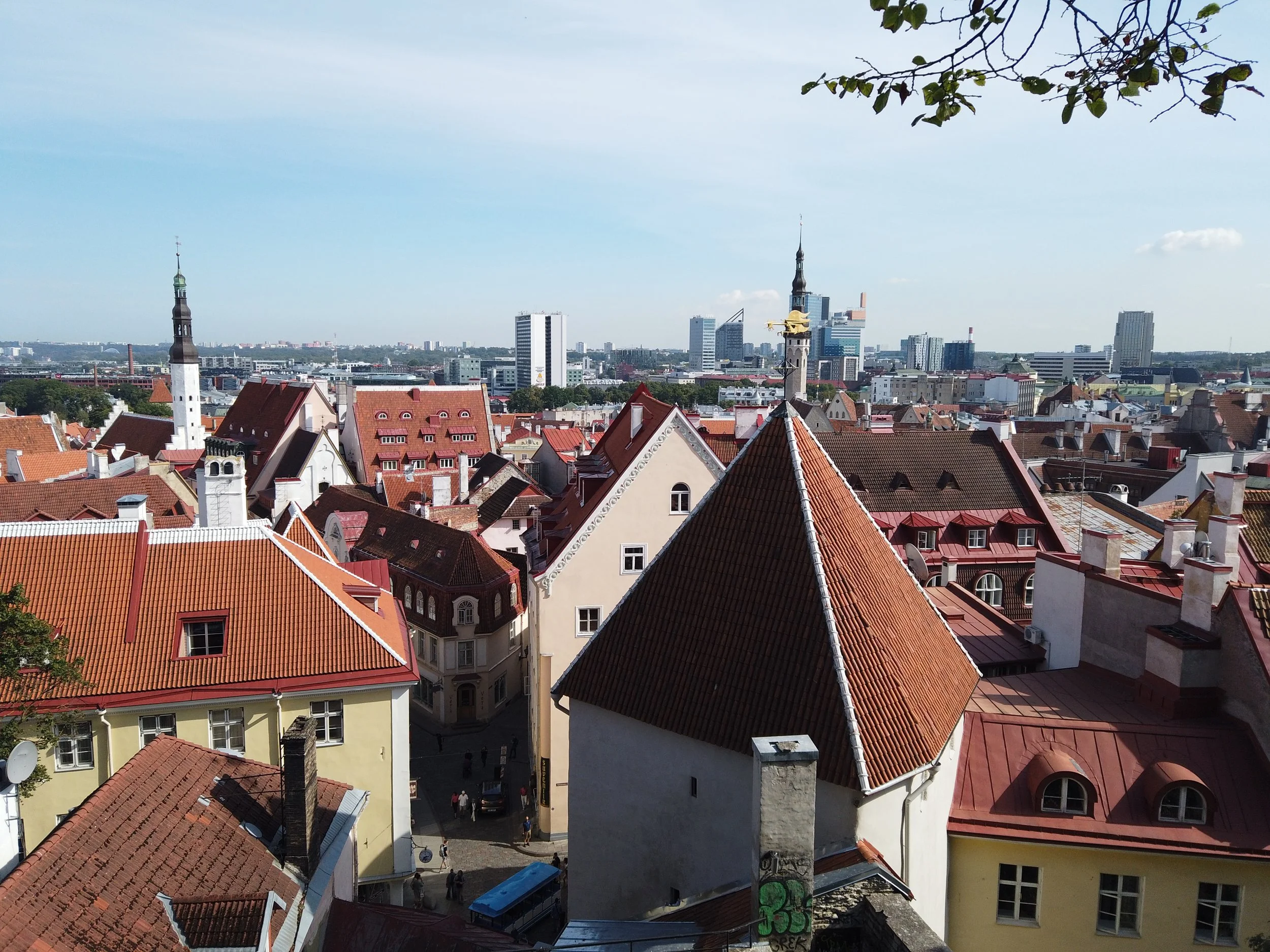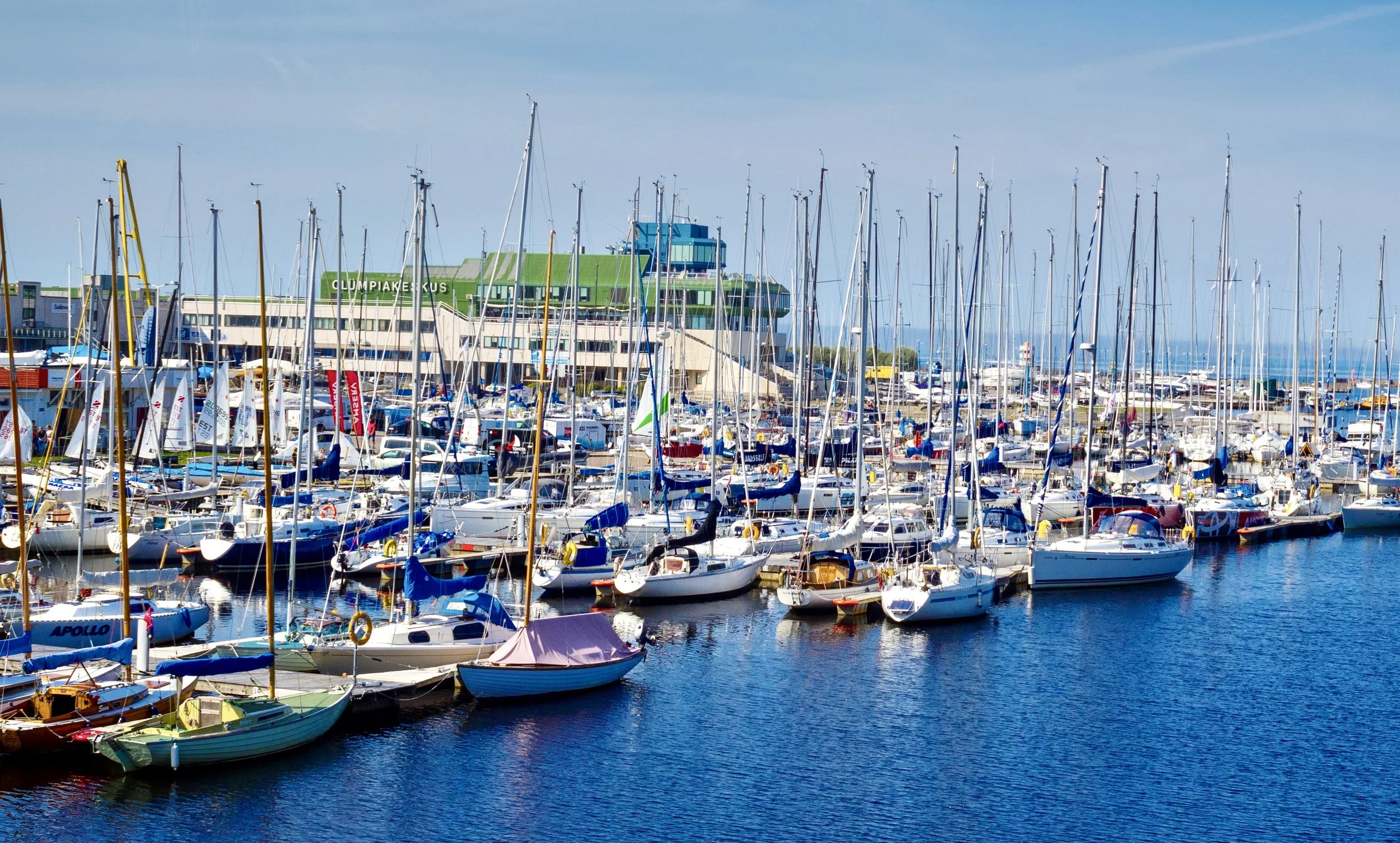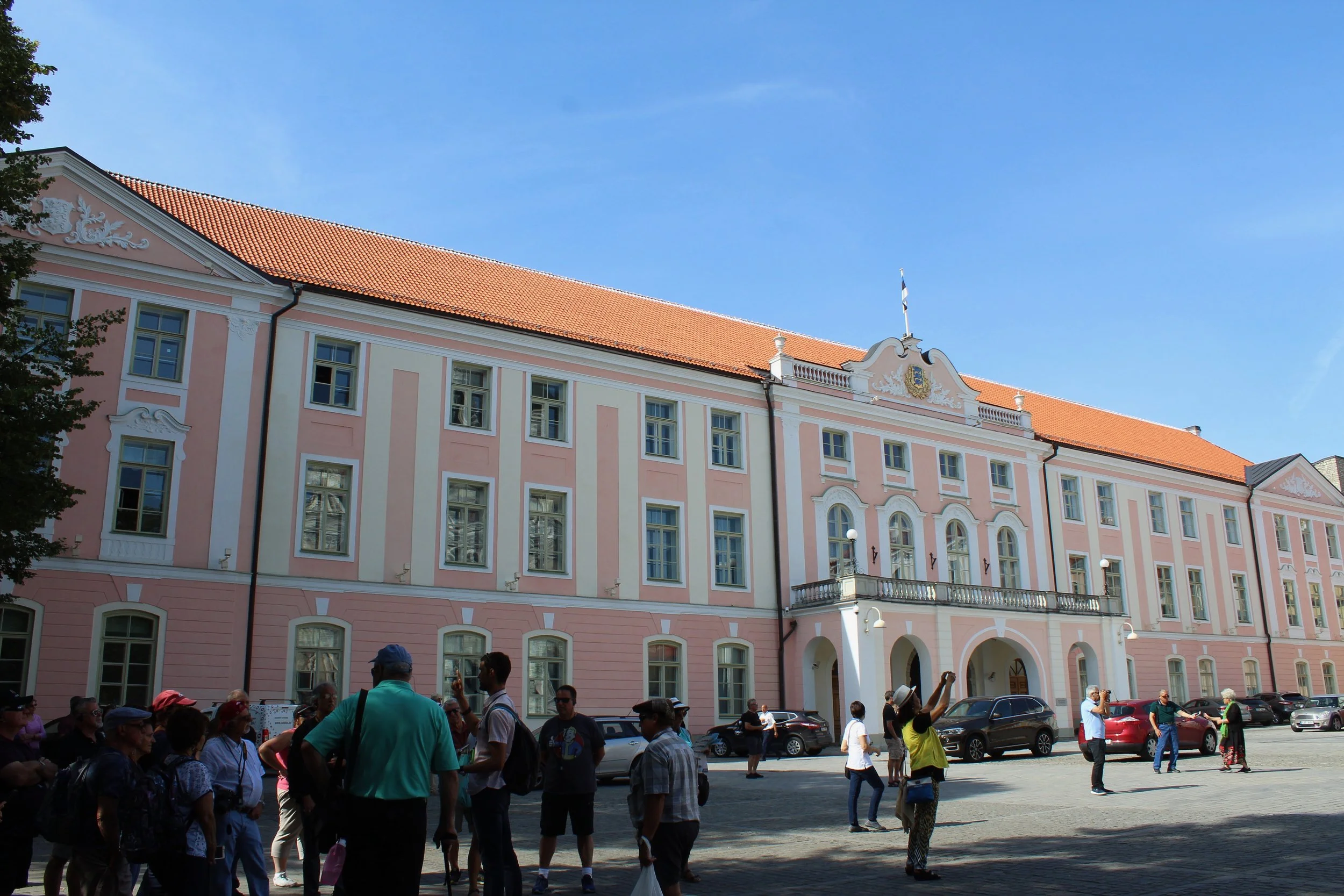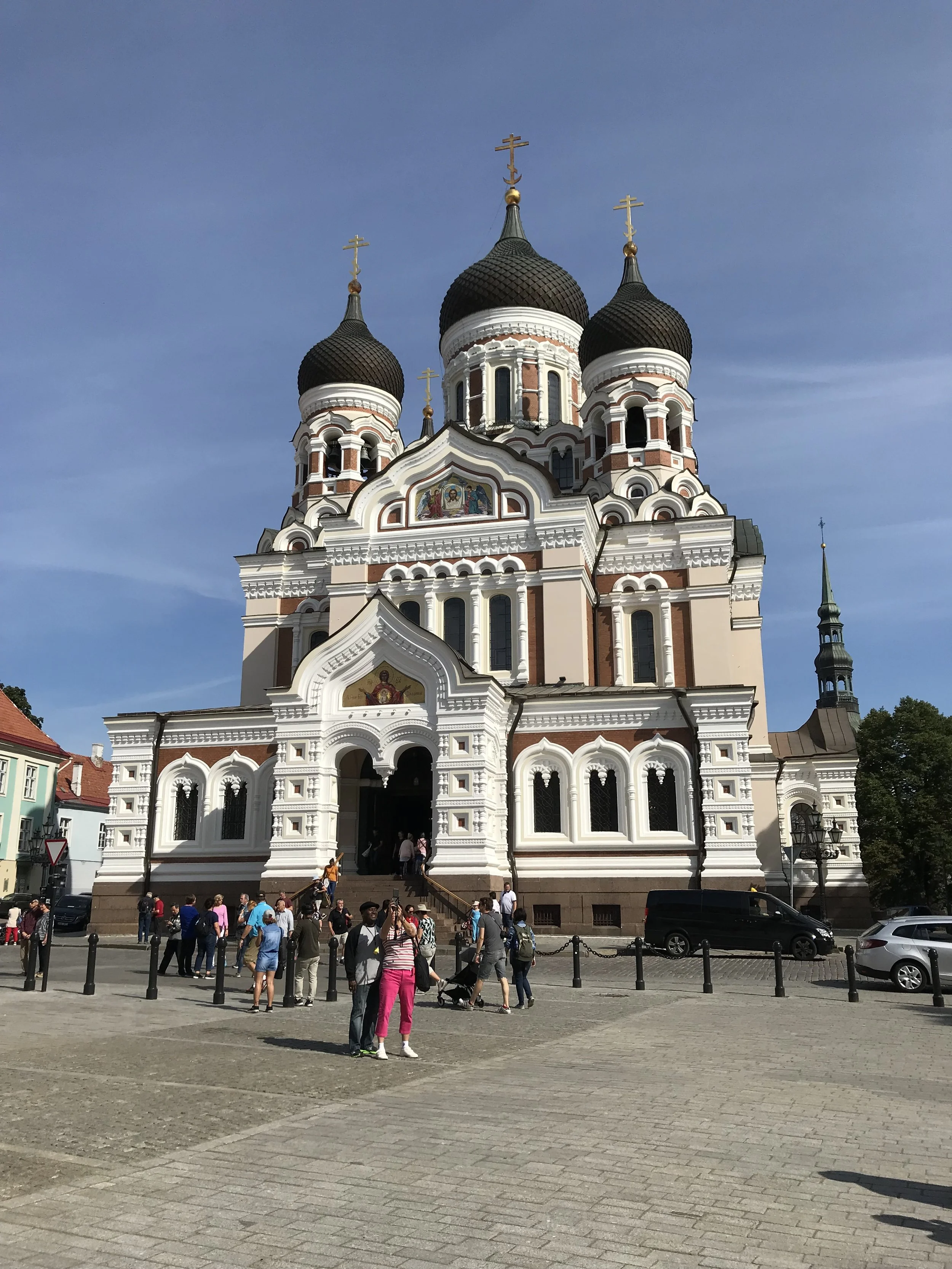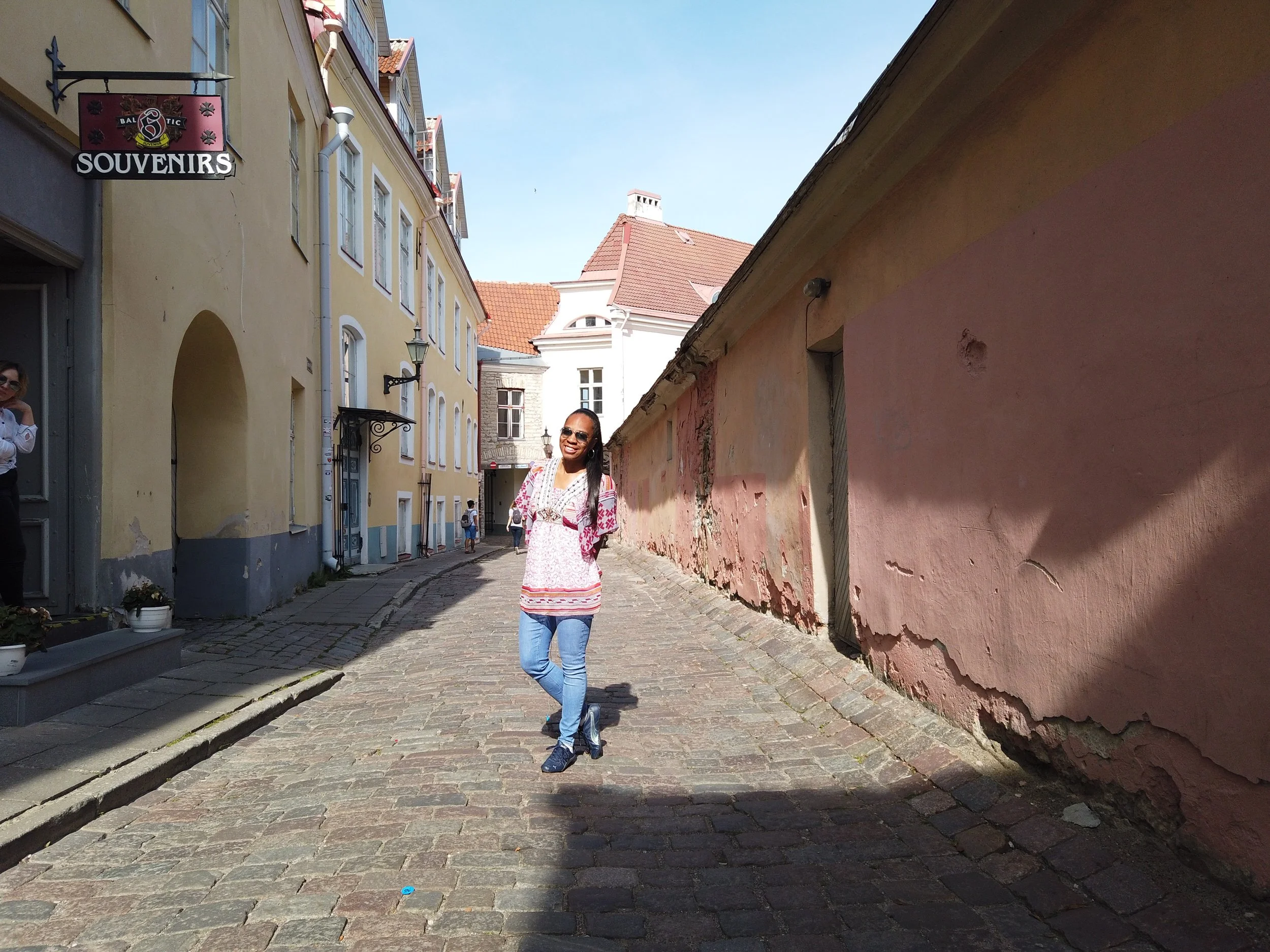Tallinn Estonia
Tallinn, Estonia is one of those places that pleasantly surprise you. We arrived in port early in the morning, and the low clouds that greeted us as we sailed in gave the city an almost fairytale quality. From a distance, the outline of the Old Town rose above the harbor with a cluster of towers, pointed roofs, and church spires. As we moved closer, the fog began to lift and more of the city became visible. We booked a guided bus tour that covered several of the major landmarks around Tallinn. It was a good way to see parts of the city that sit outside the medieval center, especially since many of the historic and cultural sites are spread out.
Tallinn is known for its preserved Old Town and stone walls, but seeing it in person gives a better sense of how the city is arranged. The Old Town sits on and around Toompea Hill, where several of the main churches and government buildings are located. The lower streets spread outward in a mix of narrow lanes, arched doorways, and red rooftops. Even from the bus, the contrast between the older areas and the newer parts of the city was easy to see. Estonia’s history of shifting rule between foreign powers also explains why the architecture ranges from medieval fortifications to Russian style cathedrals, sometimes within a few steps of each other.
The tour began along the waterfront near Pirita Marina, which hosted the sailing events for the 1980 Olympic Games. The shoreline here is open, with rows of sailboats and a mix of residential buildings, restaurants, and walking paths nearby. From there, the bus continued to the Tallinn Song Festival Grounds, one of the city’s most important cultural spaces. The field stretches out in front of a large arched stage structure that can hold crowds of tens of thousands during national celebrations. Our guide talked about the Singing Revolution, a peaceful movement that began in Estonia and played a major role in the country’s path to independence. Close by is the Gustav Ernesaks Monument, a statue honoring the composer whose work helped shape the national song tradition.
After leaving the coastal area, the bus dropped us near Toompea Hill so we could explore the Old Town on foot. The streets narrowed as we climbed toward the top of the hill, and the buildings shifted to older stone and timber styles. The walk includes some steady uphill sections and uneven cobblestones, so comfortable shoes help.
Toompea Castle
At the top stands Toompea Castle, home to Estonia’s Parliament. Its soft pink exterior sits on older stone foundations, making the building easy to recognize. Just across the square is the Alexander Nevsky Cathedral. The onion domes rise high above the street, and the darker tones of the building contrast with the lighter colors around it. It is strikingly beautiful in person.
Alexander Nevsky Cathedral
A short walk away sits St. Mary’s Cathedral, the oldest church in Tallinn. The building is slightly tucked along a quieter street. Part of the structure is slowly sinking due to the age of its foundations, and inside, the walls are lined with coats of arms from noble families.
St. Mary’s Cathedral
From there we made our way downhill through the Old Town. This walk took us alongside sections of the medieval walls, including the Neitsitorn Tower. The walls are tall and solid with narrow slits and walkways along the top and are one of the defining features of the Old Town.
Old Town
Tallinn’s Old Town is compact and easy to move through, and it does not take long to pass from one square to the next. Many of the shops sell amber, which is one of the most common souvenirs in this region. Amber appears on almost every block because it naturally washes up along the shores of the Baltic Sea. For centuries, countries around the Baltic have traded and shaped amber into jewelry and small ornaments, making it one of the signature items associated with the region.
After exploring the area on foot, the bus returned to pick us up and brought us back to the harbor. The port sits very close to the historic center, which makes Tallinn an easy city to explore even on a short schedule. From the upper decks of the ship, we had a final look at the Old Town with its towers and rooftops before sailing out. Tallinn was not a long stop, but the combination of the coastal tour and the walk through the Old Town gave a clear overview of how the city is laid out.
Getting Around
Tallinn is easy to navigate whether you explore on foot or by public transportation. The Old Town is compact, and most of the major historic landmarks are located near each other on or around Toompea Hill. However, many important cultural sites such as the Song Festival Grounds and Pirita Marina sit outside the center, which makes a bus tour helpful if time is limited. Local buses and trams cover the wider city, and single ride tickets cost a few euros depending on the route.
Most visitors who arrive on cruise ships either walk into town or join an organized excursion. The distance from the harbor to the Old Town gate is short and straightforward, but a guided tour provides easier access to the sites farther away from the center.
Food in Tallinn ranges from simple cafés to restaurants in the main squares. Prices are generally moderate, and lunch in the Old Town usually ranges from €10 to €15 per person. Admission costs vary by attraction. Some churches are free to enter, while others charge a small fee. Museum prices usually run between €5 and €15 depending on the location. The Old Town streets, squares, and exterior landmarks are free to explore.
Costs and Budget
Hotels in Tallinn are affordable compared to many European cities. Rooms in or near the Old Town average between €80 and €150 per night depending on the season. Food and transportation are reasonably priced, and visitors can spend a full day seeing the main sights without spending much on admission fees.
Taxis begin around €3 to €4 with additional charges per kilometer, but many travelers choose to walk through the Old Town or use public transportation. For budgeting purposes, expect to spend around €60 to €100 per day for meals, transport, and a few attractions, though this varies based on where you choose to eat and stay.
Other Things to Do
Travelers with more time often explore the lower part of the Old Town near the main square, where medieval buildings sit along cobblestone streets. Popular sites include the Town Hall Square, St. Olaf’s Church, and the narrow passages that connect the older neighborhoods. The Kumu Art Museum and Kadriorg Palace are located a short distance from the center and are two of the city’s most visited museums.

